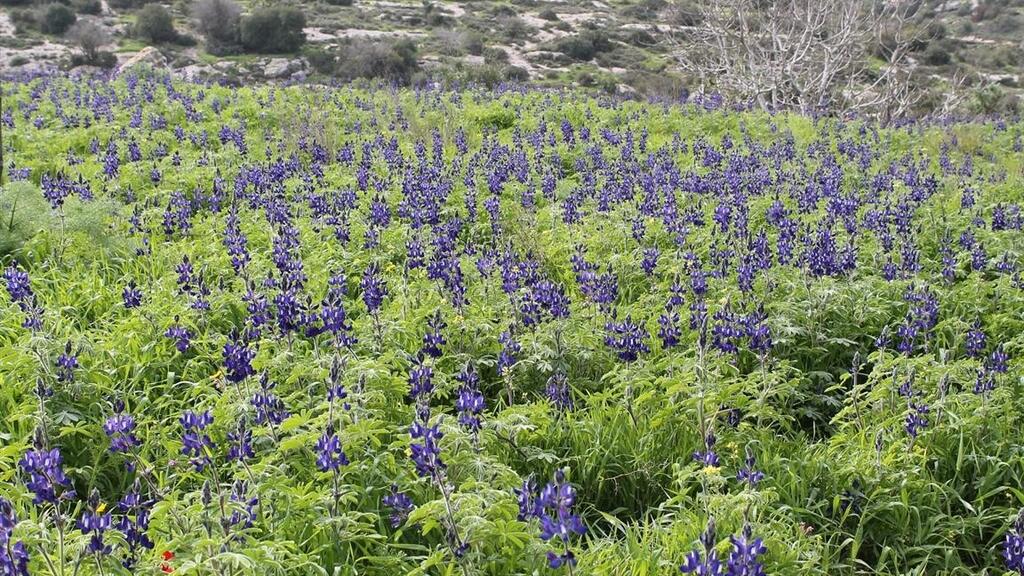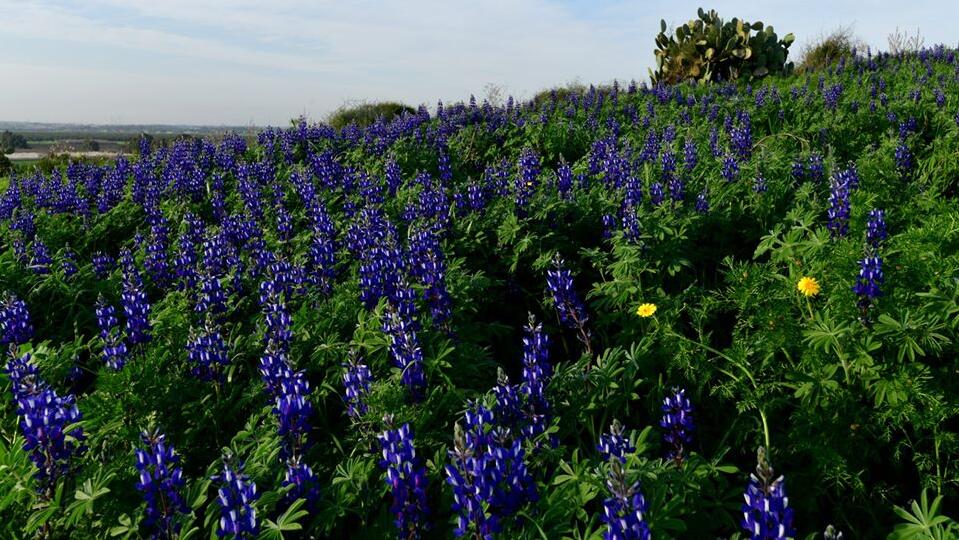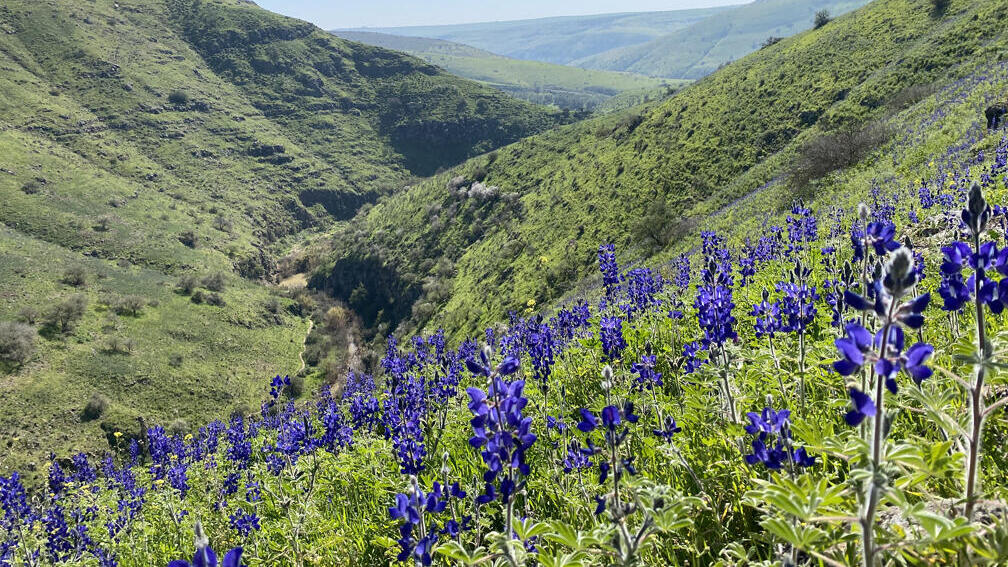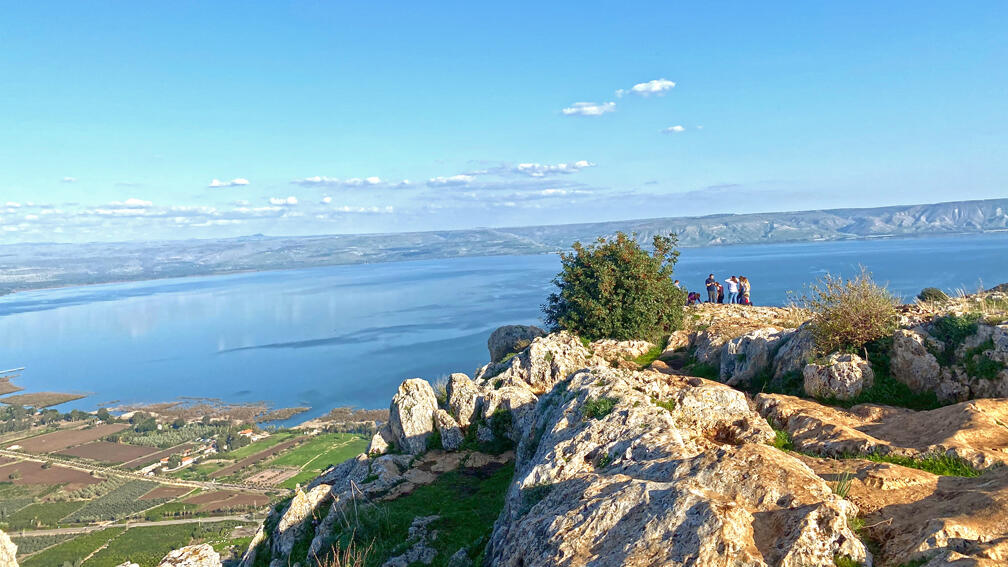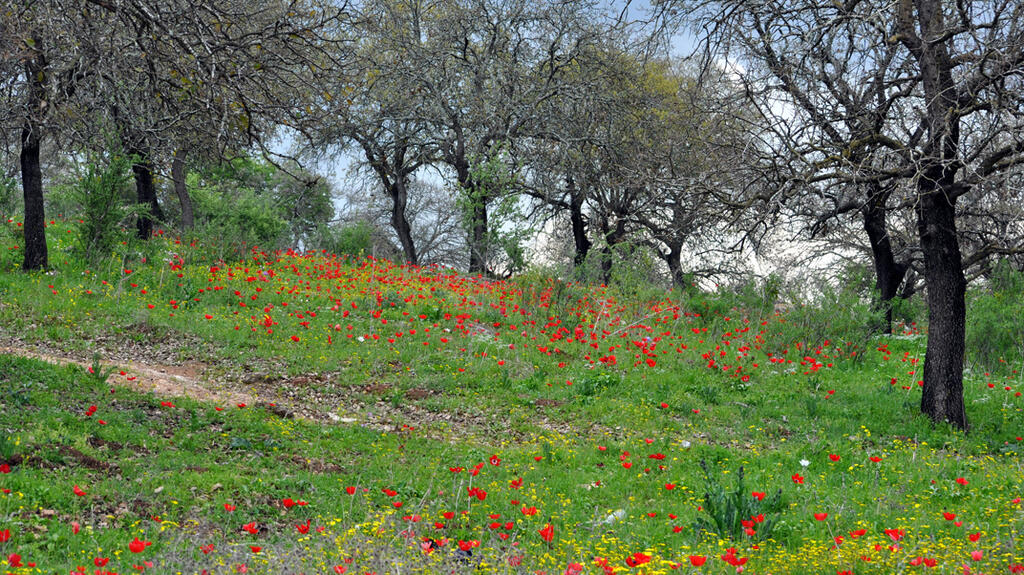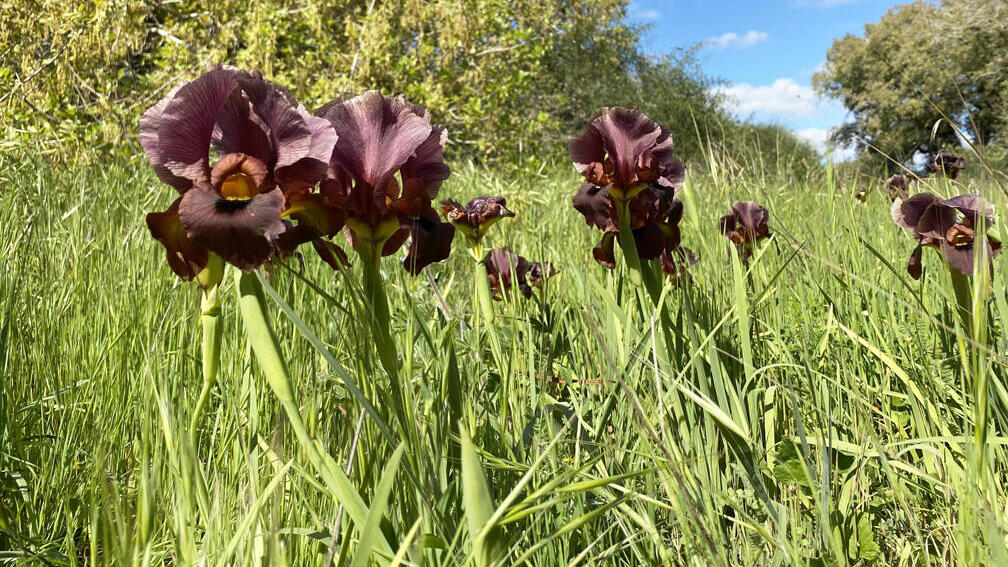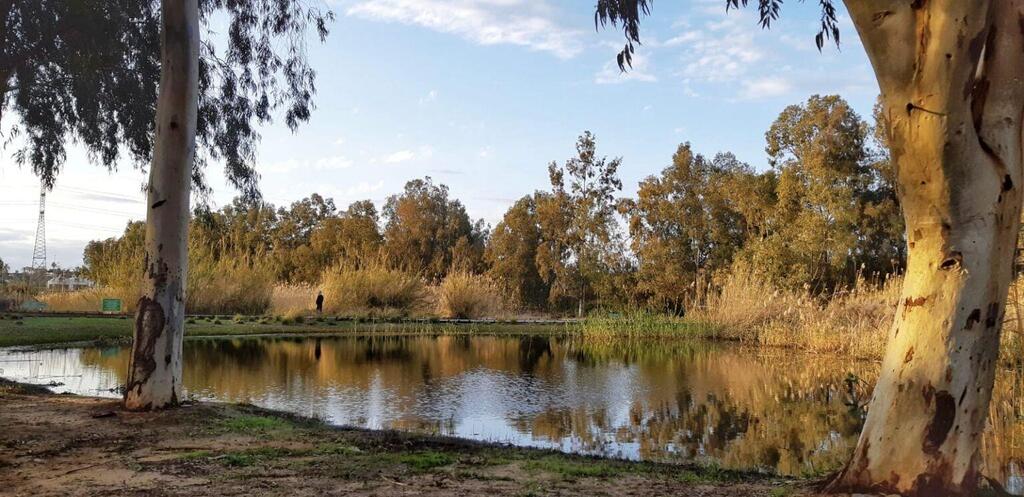Trails following the blooming of the lupines
When heading to Jerusalem, at the border between the mountains and the Elah Valley, stands Tel Sokho - considered to be the biblical battleground between David and Goliath.
More stories:
The hill overlooks the green, sunlit landscape of the Elah Valley, and also Tel Azekah, Kibbutz Netiv HaLamed-Heh and the Judean Mountains. During this season, the tel is covered with blue carpets of blooming mountain lupines, hence its name the "Lupine Hills."
To reach it, travelers depart from Beit Shemesh southward on Route 38 toward Beit Guvrin, then turn left at the Elah Junction onto Route 375, and after about 2.5 km turn right onto a dirt road near the hill. A marked trail ascends the hill from its southeastern side and descends northward toward the main road.
At Tel Katra, located on a hill in Gedera, remnants of settlement starting at the Late Bronze Age (around 1550 BCE) to the Byzantine period were discovered. The tel offers a breathtaking view of the entire area surrounding Gedera, and the nearby hills have blooming blue lupine beds during this season.
Remember, the lupine is a protected flower. Do not pick them or collect their seeds, and be careful not to trample the plants during the trip and while taking photographs.
Nahal Tavor: Green hills and lupines
In the Lower Galilee, one of the most beautiful hiking trails in the country passes through Nahal Tavor. The stream winds its way through the rugged Basalt Canyon whose cliffs are made of reddish-brown and black-colored rocks, and its lower part carries on as a gentle stream fed by several springs, flowing into the Jordan River.
In the winter, the canyon is covered with grass that paints the cliffs green, making it look like paradise. At the beginning of spring, the slopes of the canyon are dyed purple-blue thanks to the blooming of the lupines. The area also houses the largest population of gazelles in Israel.
The Basalt Canyon offers visitors two possible hiking trails: one is a short and easy route recommended for families, and the other is a long and more difficult route that includes a descent into the canyon and a walk along the streambed - recommended only for experienced hikers. Both routes will bring travelers together this season to see the magnificent blooming of the lupines.
A hike around the Sea of Galilee
Another safe place to hike now is the area around the Sea of Galilee. From the stunning view of the lookout at the Arbel National Park, through picturesque forests between Ein Gev and Kibbutz HaOn, all the way to a peninsula and a hidden waterfall between Kfar Nahum and the village of Tabgha.
Where can you see anemone fields?
Most of the beautiful Western Negev will remain off-limits to hikers this year, as will areas near the northern border - but you can still enjoy the beautiful anemone blooms in other locations. These include the Sargel anemone forest near the Megiddo airstrip in the Jezreel Valley, Emek HaShalom and Nahal Tavor.
More than anemones: Hiking in search of irises
The iris atropurpurea only blooms in Israel. Its color is a strong burgundy, sometimes taking on a nearly black color, and its large flowers can't be ignored when seen during a hike. This iris is also the first iris to bloom and unlike, its other family members, it's also the only one that can be found in central parts of the country.
It's time to hike in Israel's winter ponds
The rainy winter season does wonders for the winter ponds, filling them up in a spectacular way. Some say they're like the lakes in rainy European countries. It's an excellent opportunity to hike around them and get to know the unique ecological system they develop - all while enjoying a fascinating experience in nature with the sounds of chirping birds and croaking frogs in central Israel.
Both amateur and professional nature photographers alike will be able to capture stunning and one-of-a-kind photographs of the landscape they offer.
First published: 15:57, 02.28.24


